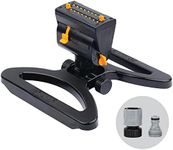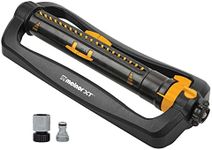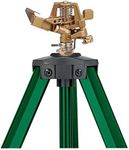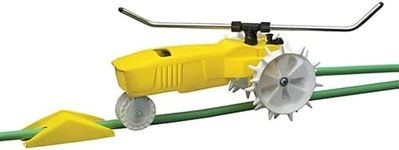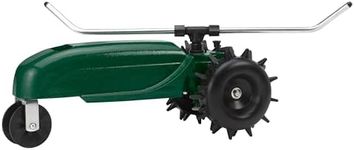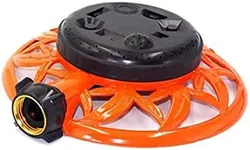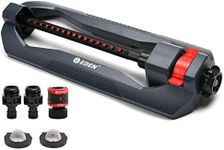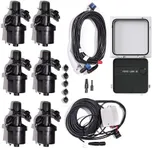Buying Guide for the Best Water Sprinklers
Choosing the right water sprinkler for your garden or lawn can make a significant difference in maintaining a healthy and vibrant landscape. The right sprinkler will ensure that your plants receive the appropriate amount of water, saving you time and effort. When selecting a water sprinkler, consider the size and shape of your garden, the type of plants you have, and your water pressure. Here are some key specifications to help you make an informed decision.Sprinkler TypeThe type of sprinkler is crucial as it determines the coverage area and water distribution pattern. Common types include oscillating, rotary, stationary, and impact sprinklers. Oscillating sprinklers are ideal for rectangular areas, rotary sprinklers work well for circular patterns, stationary sprinklers are best for small, fixed areas, and impact sprinklers are suitable for large areas with adjustable patterns. Choose the type based on the shape and size of your garden.
Coverage AreaCoverage area refers to the maximum area a sprinkler can water. This is important to ensure that your entire garden receives adequate water. Coverage areas can range from a few hundred square feet to several thousand. For small gardens, a sprinkler with a smaller coverage area will suffice, while larger gardens will require a sprinkler with a more extensive coverage area. Measure your garden and choose a sprinkler that matches or slightly exceeds this area.
Water Pressure CompatibilityWater pressure compatibility ensures that the sprinkler operates efficiently with your home's water pressure. Sprinklers are designed to work within specific pressure ranges, typically measured in pounds per square inch (PSI). Low-pressure sprinklers are suitable for areas with low water pressure, while high-pressure sprinklers are needed for areas with higher water pressure. Check your water pressure and select a sprinkler that matches it to ensure optimal performance.
AdjustabilityAdjustability refers to the ability to change the spray pattern, distance, and direction of the water. This feature is important for customizing the watering to fit different areas of your garden. Some sprinklers offer adjustable nozzles and settings, allowing you to fine-tune the water distribution. If you have a garden with varied plant types and layouts, an adjustable sprinkler will provide the flexibility needed to cater to different watering needs.
Durability and MaterialDurability and material determine the longevity and robustness of the sprinkler. Sprinklers are made from various materials, including plastic, metal, and a combination of both. Metal sprinklers are generally more durable and can withstand harsh weather conditions, while plastic sprinklers are lighter and more affordable but may not last as long. Consider the climate in your area and how often you plan to use the sprinkler when choosing the material.
Ease of UseEase of use encompasses how simple it is to set up, operate, and maintain the sprinkler. Look for features such as easy-to-connect hose fittings, intuitive controls, and minimal maintenance requirements. If you prefer a hassle-free experience, choose a sprinkler that is user-friendly and comes with clear instructions. This will save you time and effort in the long run.

